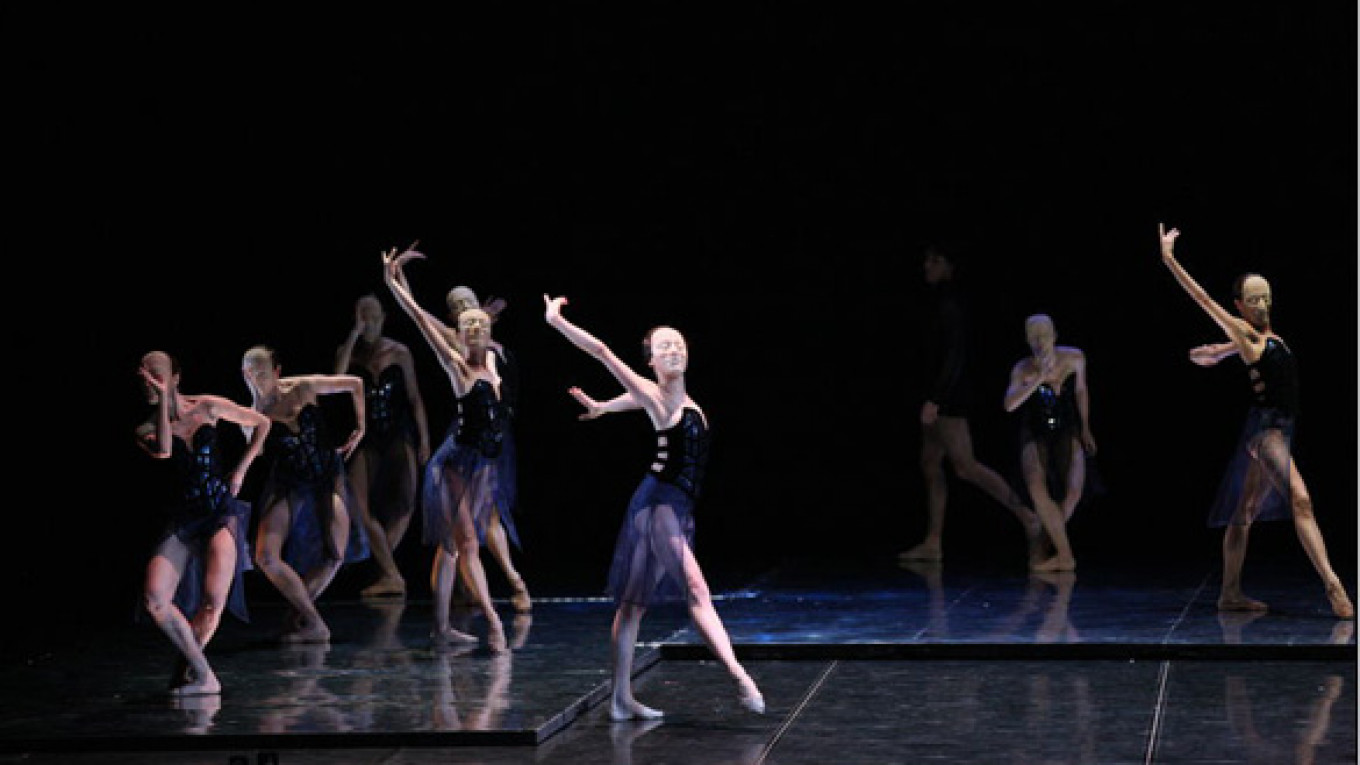PERM — There has been much to enjoy during the past season of dance in Moscow. But looking back over it, there was nothing that gave me more pleasure than the premieres in mid-June of two ballets to the music of Igor Stravinsky that took place some 1,368 kilometers to the northeast of Moscow at the Perm Theater of Opera and Ballet.
Perm's ballet troupe, considered by most experts to rank, together with Novosibirsk's, as one of Russia's two finest regional dance companies, has visited Moscow on a number of occasions over the past decade under auspices of the Golden Mask theater awards festival. In 2004, it was honored with the festival's prize for best production of ballet.
Although Perm's theater this year celebrates its 140th anniversary, the groundwork for the ballet troupe's successful development was essentially put in place during World War II by members of the Leningrad Theater of Ballet and Opera (now the Mariinsky) who were evacuated to Perm from their besieged home city.
On the program in June were Stravinsky's "Les Noces" (The Wedding), as choreographed by the great Czech-born master Jiri Kylian, and the composer's "Petrushka," in choreography by American Nicolo Fonte. In their original form, both ballets were first produced in Paris by a famous native son of Perm, the impresario Sergei Diaghilev.
"Les Noces" dates back to 1923, and the choreography then created for it by Bronislava Nijinska, sister of famed dancer Vaslav Nijinsky, dealt with the rituals of a Russian peasant wedding. In fashioning his own version of the ballet nearly six decades later, Kylian turned away from the original folkloric approach and sought essentially to extract movement from the music of Stravinsky's score.
On hand in Perm to stage "Les Noces" were Elke Schepers and Philip Taylor, two former members of Netherlands Dance Theater, where Kylian served as artistic director from 1975 to 1999. Both took time out to introduce me to the ballet's essential elements. "There are references to Nijinska," said Taylor, "not choreographic references, but movement references, that show a form of respect for what has gone before. But Kylian then went on to create his own movement. The result is a physical interpretation of the music and the energy it represents combined with the ideas that basically lie behind the ballet."
Essential to dancing Kylian, according to Schepers and Taylor, are energy and speed, musicality and a mastery of the choreographer's characteristic arm and torso movements.
Learning an entirely new choreographic language proved difficult for the Perm dancers. But by the time of the premiere, they had made great strides toward grasping it. Young soloist Anna Poistogova proved particularly outstanding as the Bride, dancing throughout the ballet's half-hour length with unflagging dynamism.
Stravinsky wrote the music of "Les Noces" for the unusual combination of four pianos, a battery of percussion instruments, chorus and four vocal soloists. In Perm, where Kylians' version was given a live musical accompaniment for the first time ever, the front six rows of the parterre were removed to make space for the pianos, chorus and vocal soloists, while the percussionists occupied the orchestra pit. On the podium was Greek-born conductor Teodor Currentzis, artistic director of the Perm theater since the beginning of last year and well-known to Moscow audiences from his frequent appearances here over the past decade. "Les Noces" proved a perfect match for Currentzis' formidable talents and received as thrilling a performance as any I could imagine.
Choreographer Fonte's version of "Petrushka" originally premiered late last year at Oregon Ballet Theater in the United States. "In looking for a new approach," Fonte told me, "I first came up with the idea of turning the entire cast, not just Petrushka, the Moor and the Ballerina, into puppets. But as it's turned out, they aren't really puppets, but just faceless people wearing masks and being manipulated by the so-called Conjurer [the puppet master of the ballet's original version, as choreographed by Mikhail Fokin in 1911]."
"Petrushka begins to see that he is being manipulated," said Fonte, "and finds the courage to rip off his mask. He then becomes a catalyst for the others to do the same — in effect, a catalyst of revolution." Fonte admitted he was making "a quasi-political statement," one which some might find relevant to present-day Russia.
For the most part, "Petrushka" worked very well in Fonte's abstract setting and the Perm dancers gave it a performance filled with energy, enthusiasm and dexterity.
"Les Noces" seems quite likely to turn up in Moscow next spring as a Golden Mask nominee, perhaps together with "Petrushka." Meanwhile, Schepers is due in a few months' time to return to the Stanislavsky and Nemirovich-Danchenko Musical Theater to add another Kylian ballet to his "Petit Mort" and "Sechs Taenze," which together brought the theater this year's Golden Mask for best ballet.
A Message from The Moscow Times:
Dear readers,
We are facing unprecedented challenges. Russia's Prosecutor General's Office has designated The Moscow Times as an "undesirable" organization, criminalizing our work and putting our staff at risk of prosecution. This follows our earlier unjust labeling as a "foreign agent."
These actions are direct attempts to silence independent journalism in Russia. The authorities claim our work "discredits the decisions of the Russian leadership." We see things differently: we strive to provide accurate, unbiased reporting on Russia.
We, the journalists of The Moscow Times, refuse to be silenced. But to continue our work, we need your help.
Your support, no matter how small, makes a world of difference. If you can, please support us monthly starting from just $2. It's quick to set up, and every contribution makes a significant impact.
By supporting The Moscow Times, you're defending open, independent journalism in the face of repression. Thank you for standing with us.
Remind me later.






